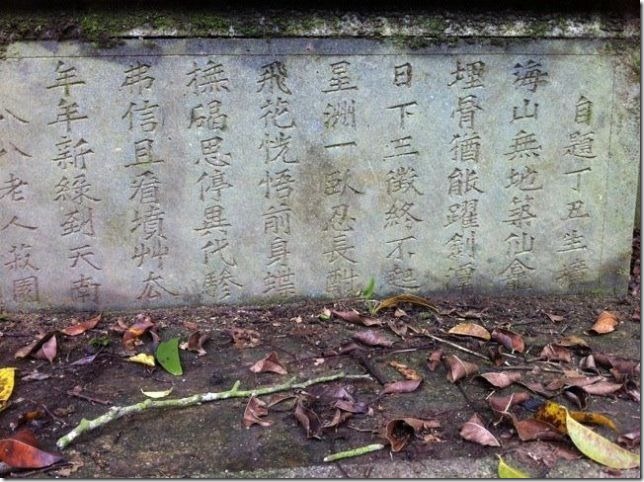Between the past & present….
0The Purpose of Keeping Heritage sites is to Preserve the Physical Linkage between the Present and Past
When the relevant authorities were planning for the cemetery to give way to the highway, did they know the historical value of Bukit Brown? Or was it after the researchers and the public’s strong interest and views that they suddenly realised the importance of this site? If this is the case, it reflects a deeper layer of problem: do the upper echelons of our government officials seriously lack historical and cultural conciousness? Today Bukit Brown is affected, who is to say a similar problem will not happen in future?
More than 50 – 60 years ago, scholars like Tan Yeok Seong and Hsu Yun Tsiao did indepth research of Singapore heritage sites including cemeteries, and they also inspired later generation scholars to conduct more research.
Everyone knows that History is ever continuing, and we make use of the past to shine a torch for the future. The 19th century German philosopher Hegel once said, ” What we can see now is but the fruit of the past, and what history tell us is invariably to preserve the things left behind from the past. Hence keeping track of the development of history is like a water current, the further out it can flow, the more volume it can gather, and the more content it can generate.
The importance of preserving heritage sites is to keep the physical linkage between the past and the present. If we destroy each and every heritage site, it means destroying the links between the past and the present, it means cutting off the roots of our present generation, so that if the latter generations would like to know how their ancestors travelled the path before, they would not have the physical evidence to substantiate it
Continuous gathering of history knowledge and research should be the mission of our education sector, but alas this is where the weakness of our Singapore education lies. We should build upon the foundation of the past research done by our predecessors, expand and upgrade them to the next higher level.
Translated by Raymond Goh extracted from the article by Han Tan Juan
Original Article
早报网–从恒山亭到武吉布朗
(2012-05-31)
韩山元
… 开门见山
笔心
保留古迹的意义就在于保留古与今的一个实体的连接点。
武吉布朗坟山因为当局要修建高速公路,要把其中数千座坟墓清
远在武吉布朗之前,新加坡开埠初期有座大坟山在恒山亭后面(
碧山也是历史超过百年的广东人在本地最大的坟山,1819年
当年这些坟山被铲除,也曾有人提出异议,表示惋惜,但是其声
有关当局在考虑修建高速公路,须叫古墓让路时,事前知道不知
早在五六十年前,陈育崧、许云樵等学者对于新加坡的古迹(包
众所周知,历史是有延续性的,是承先启后的。19世纪德国哲学家
保留古迹的意义就在于保留古与今的一个实体的连接点,如果将
历史知识与研究也应该有延续性,历史知识的延续是教育界的任


Comments